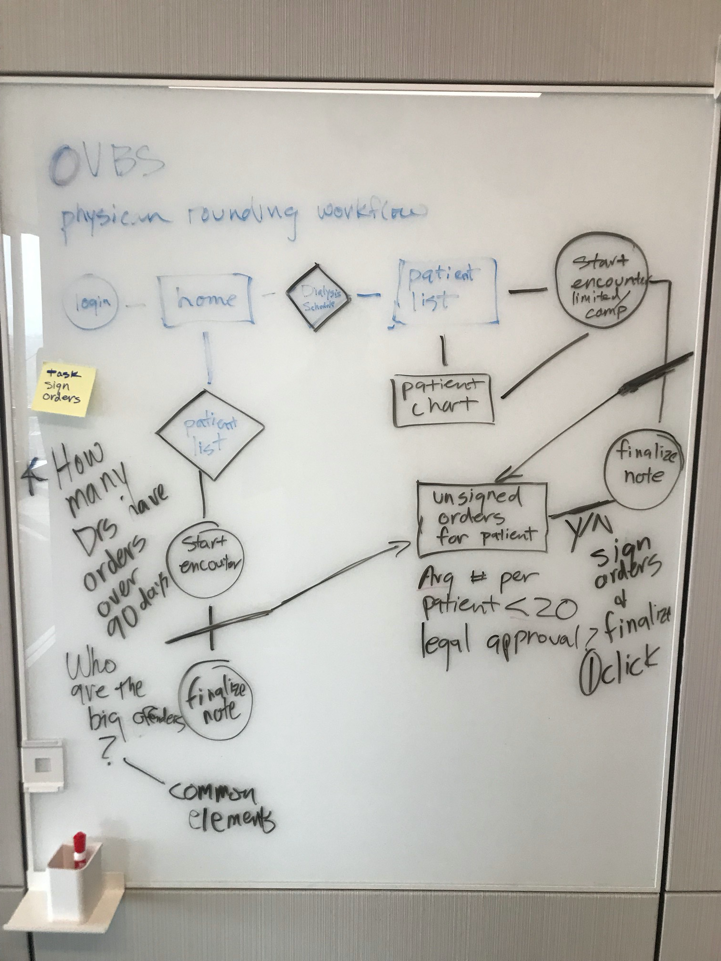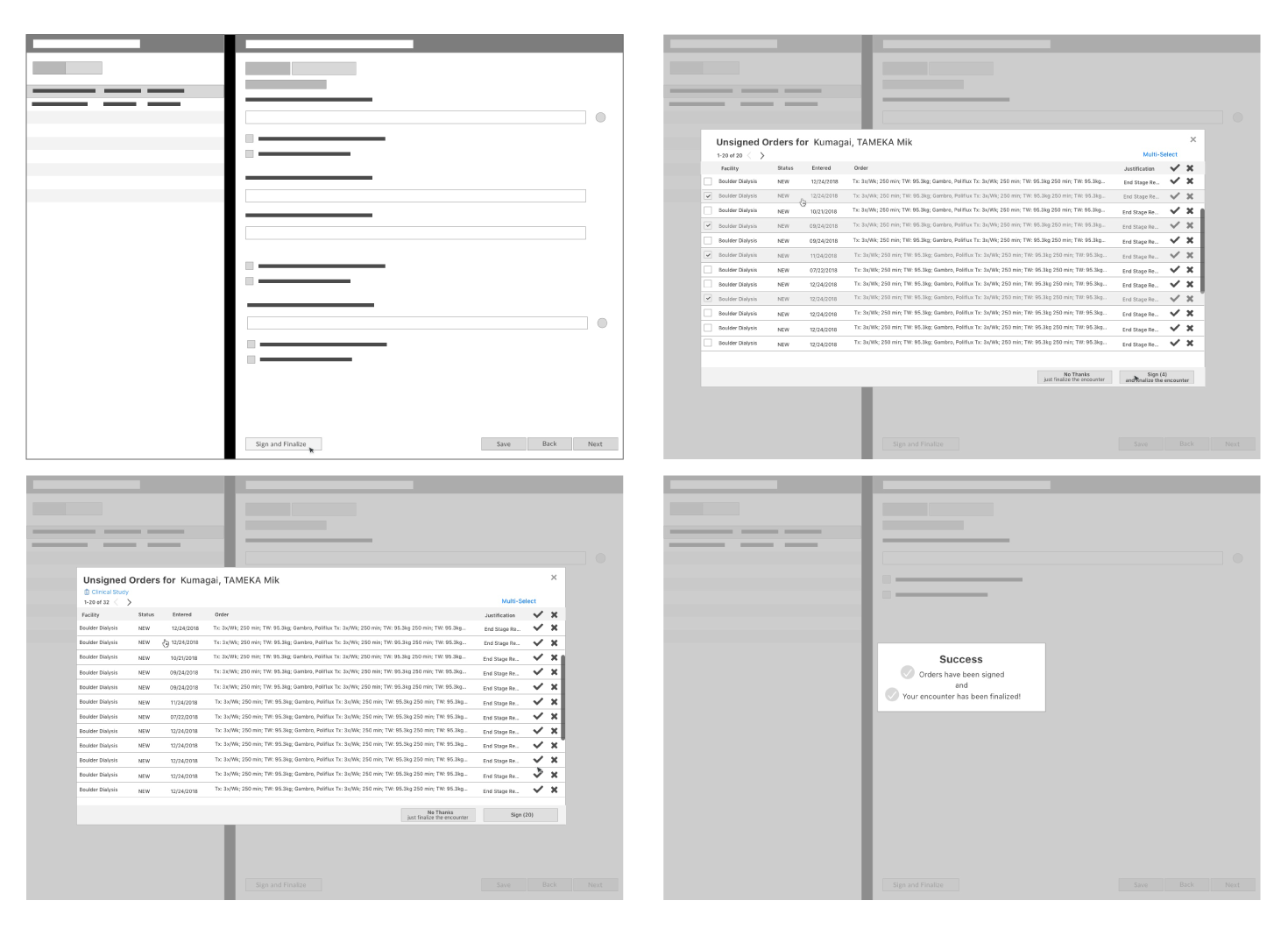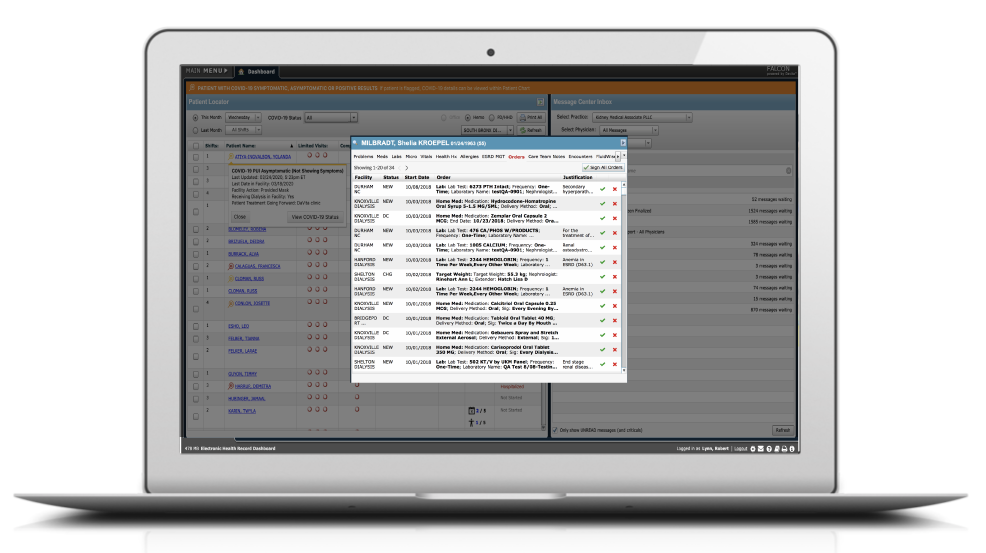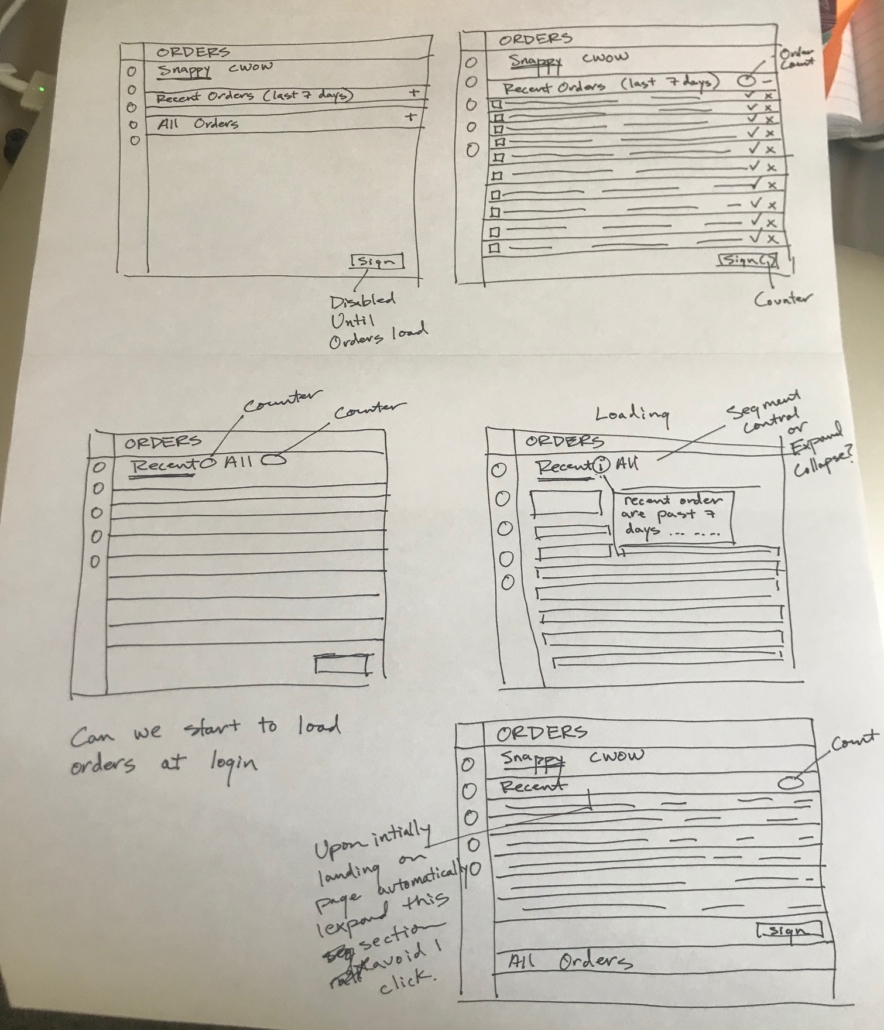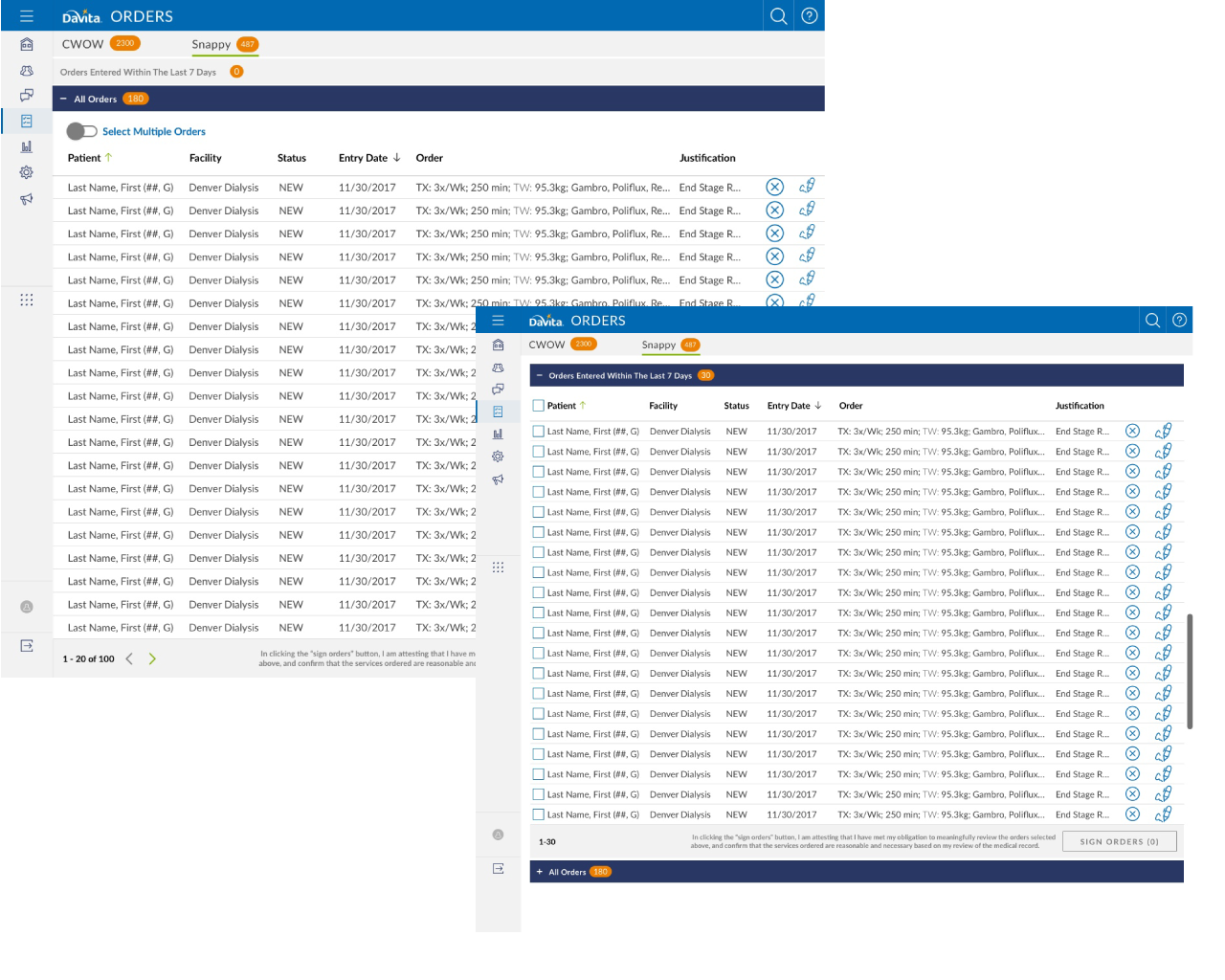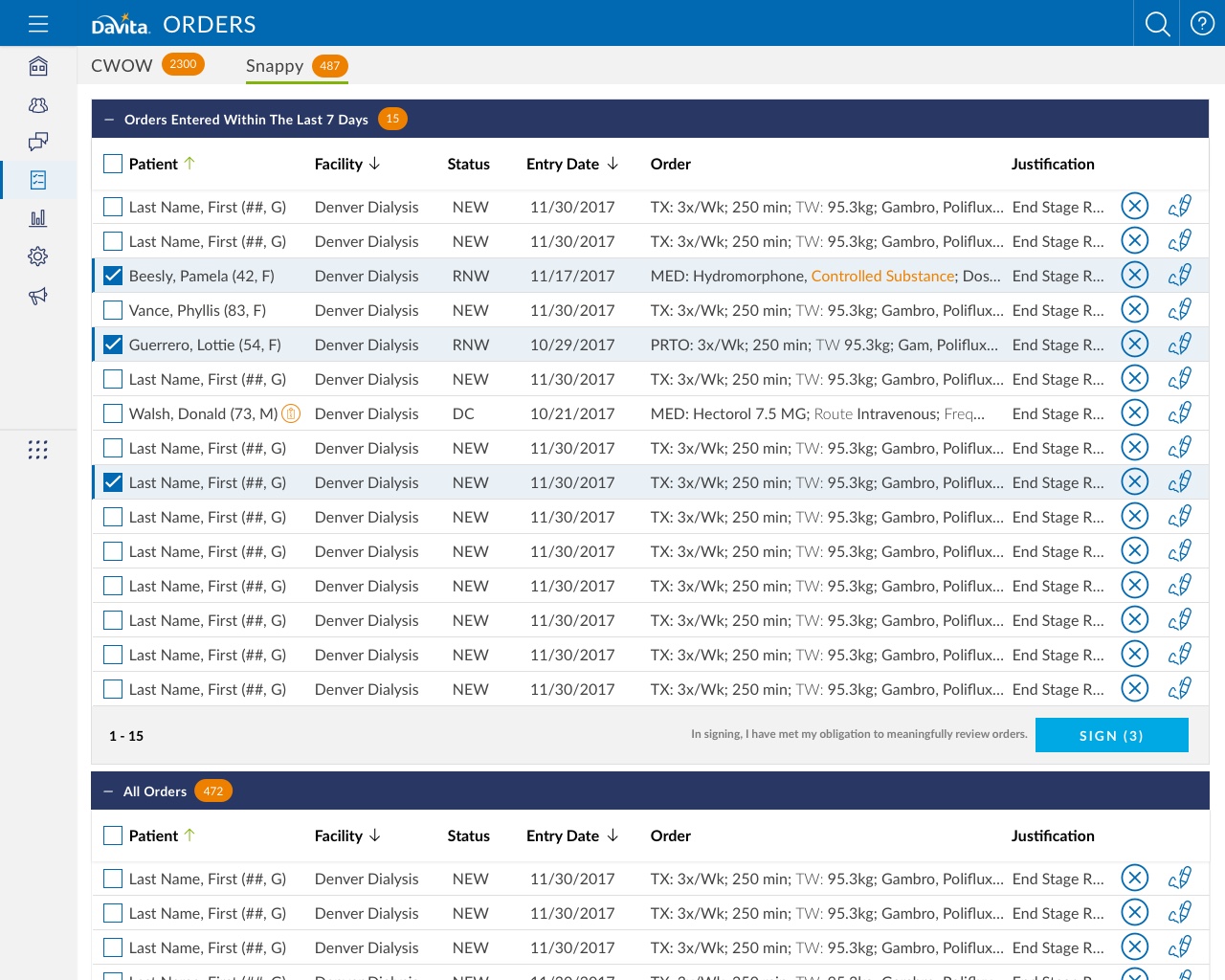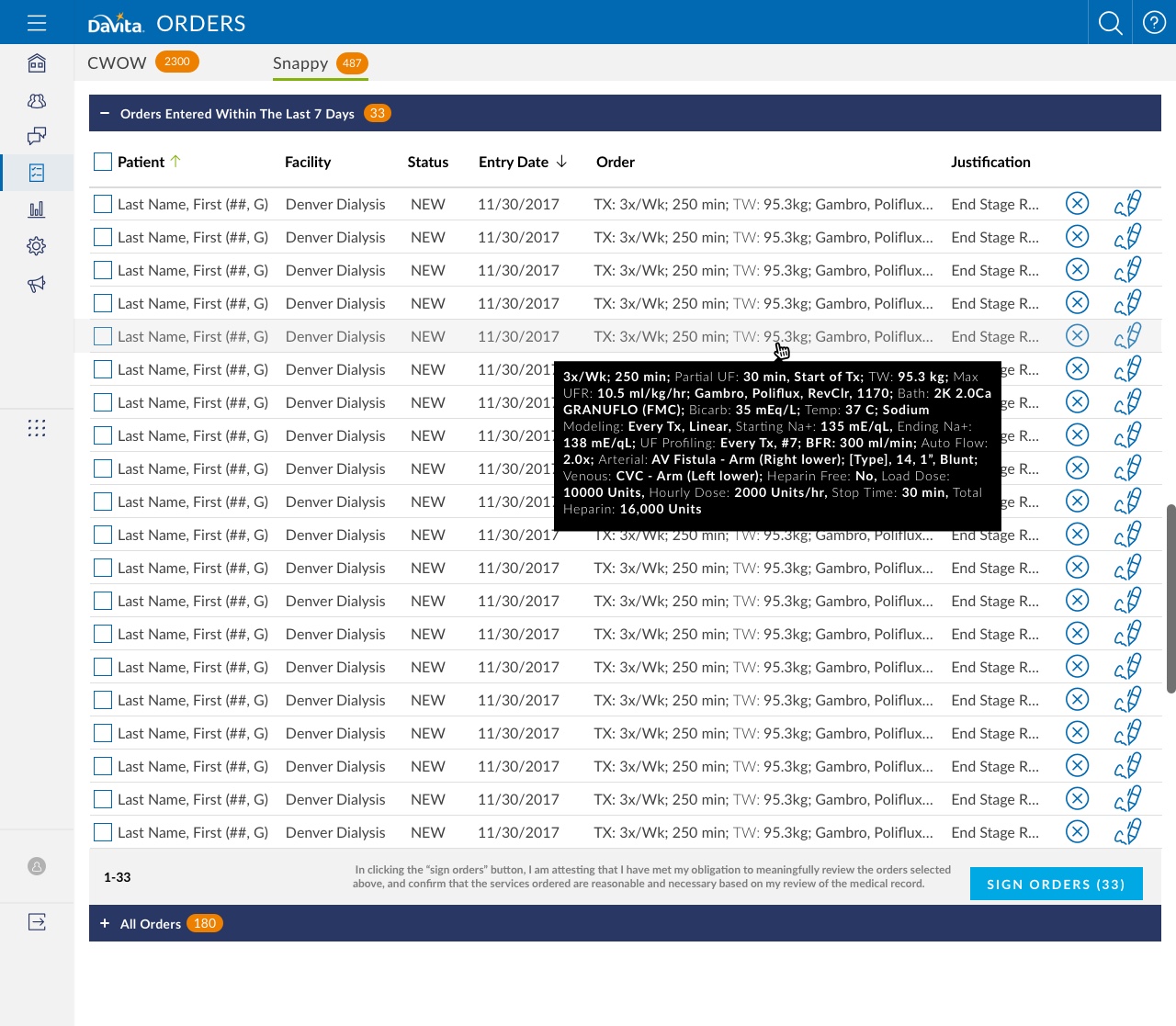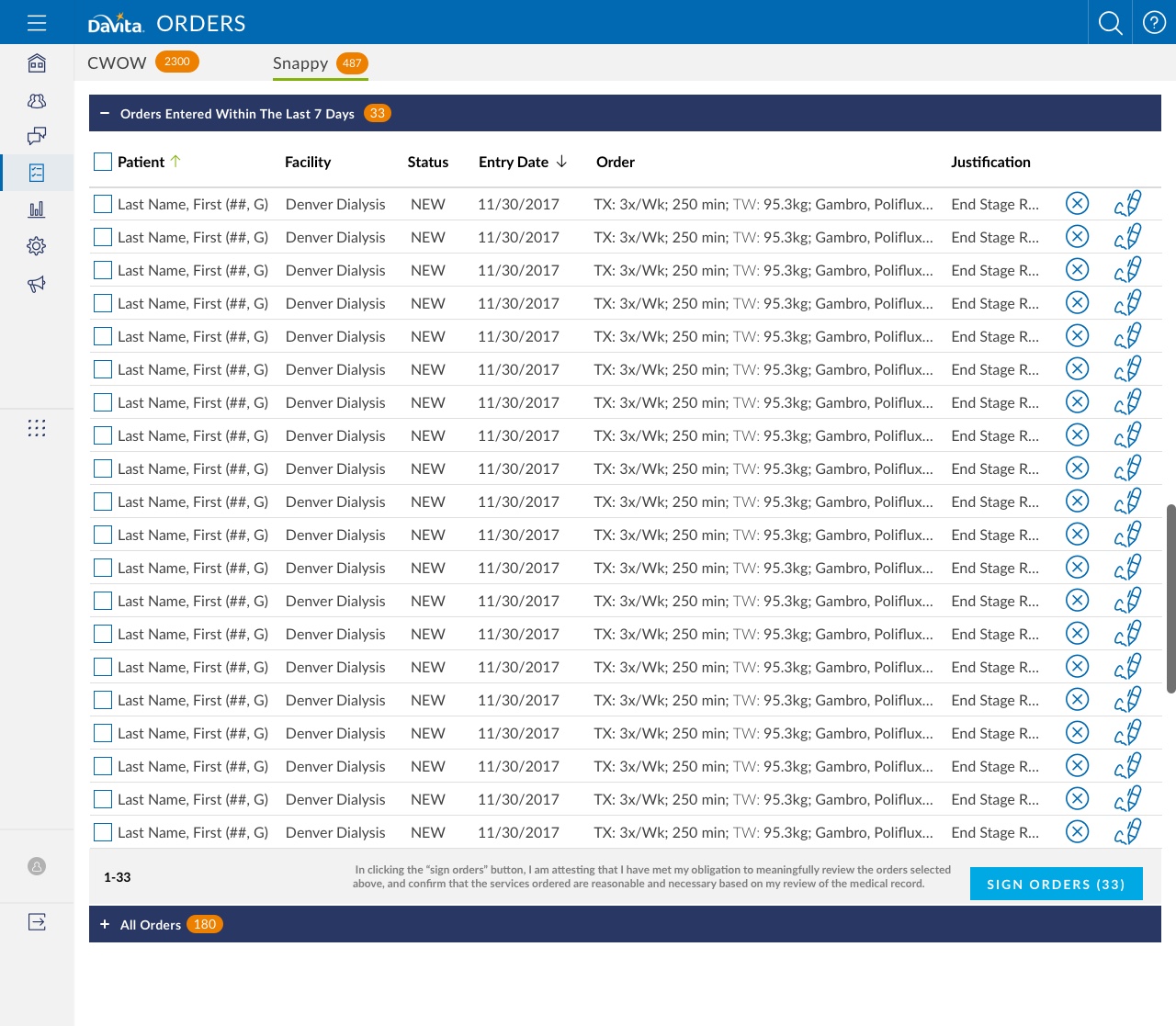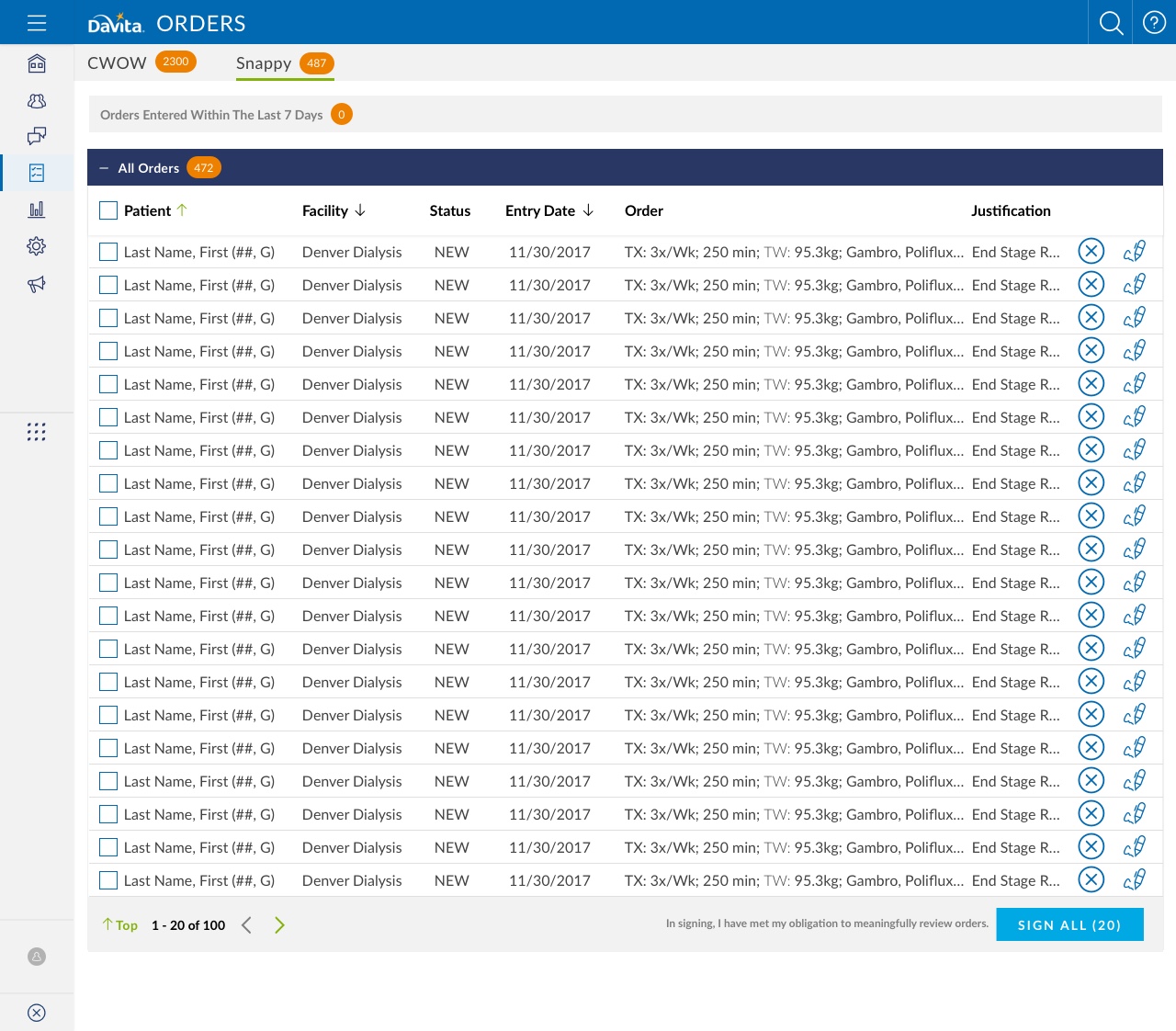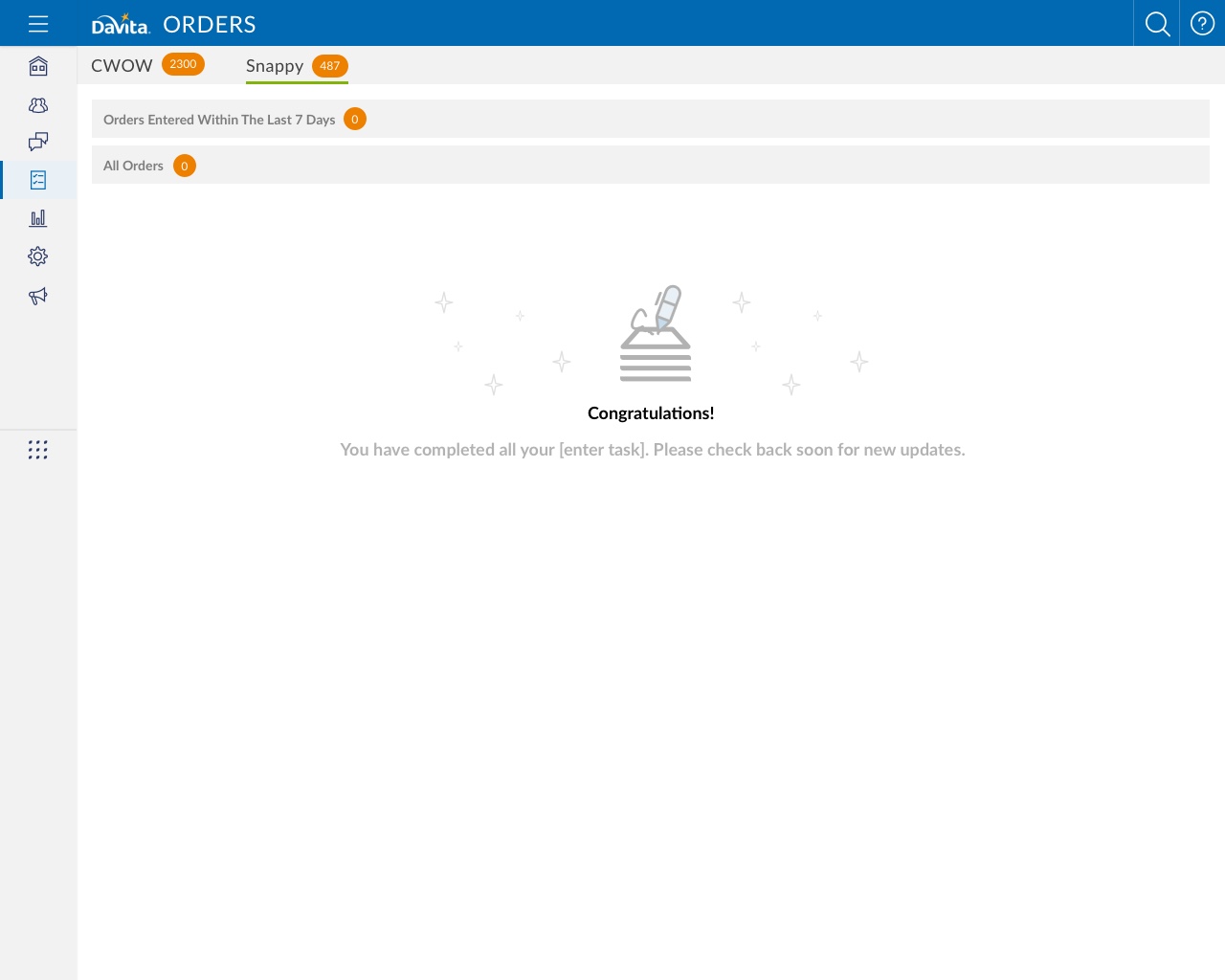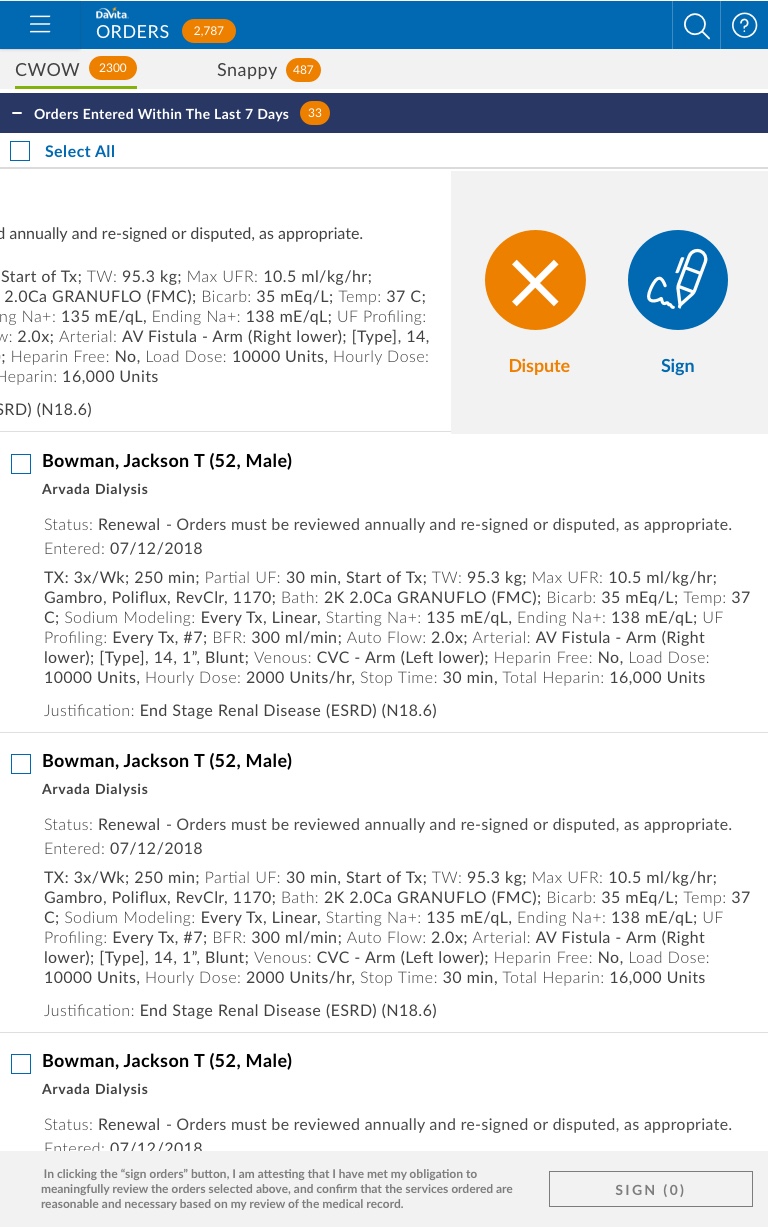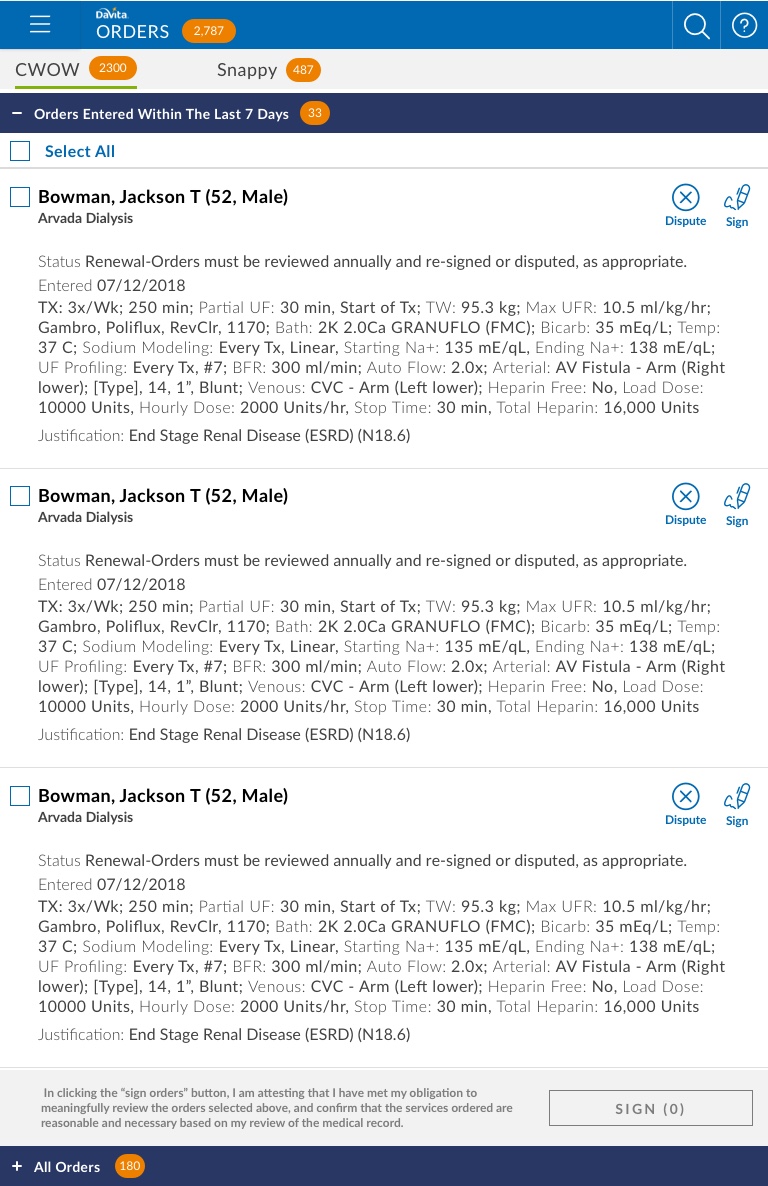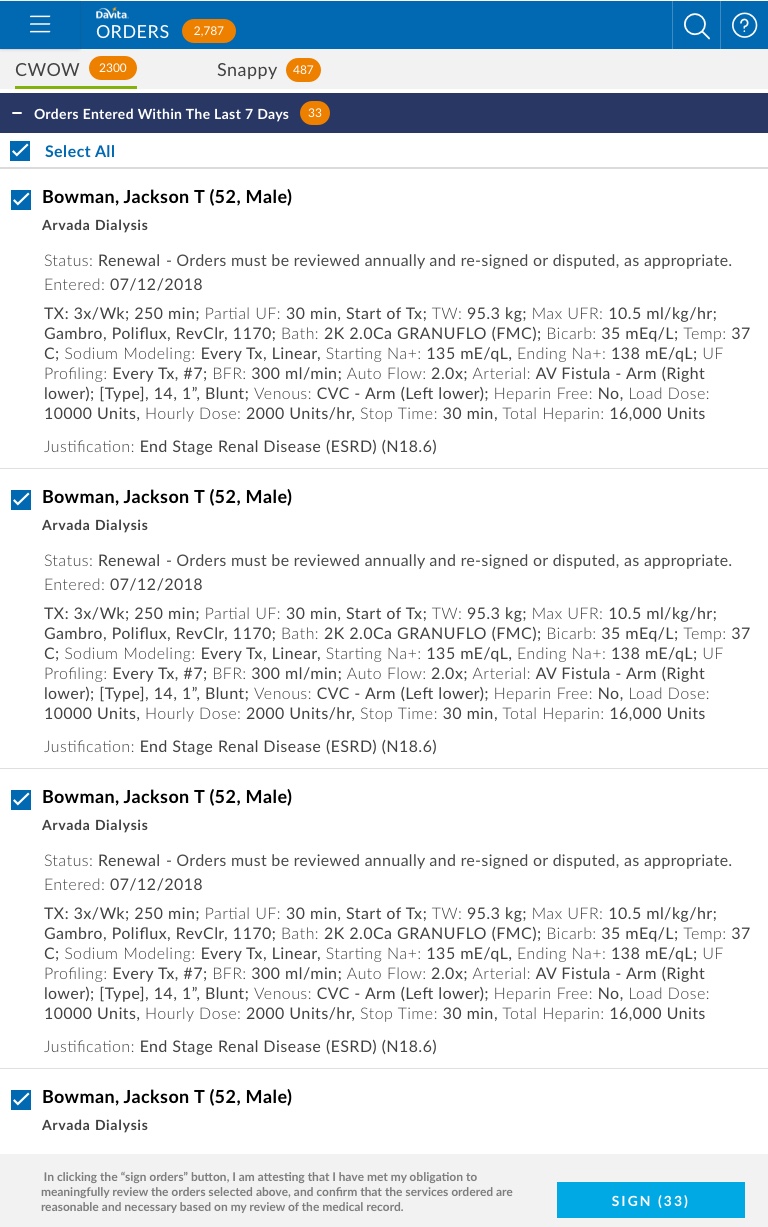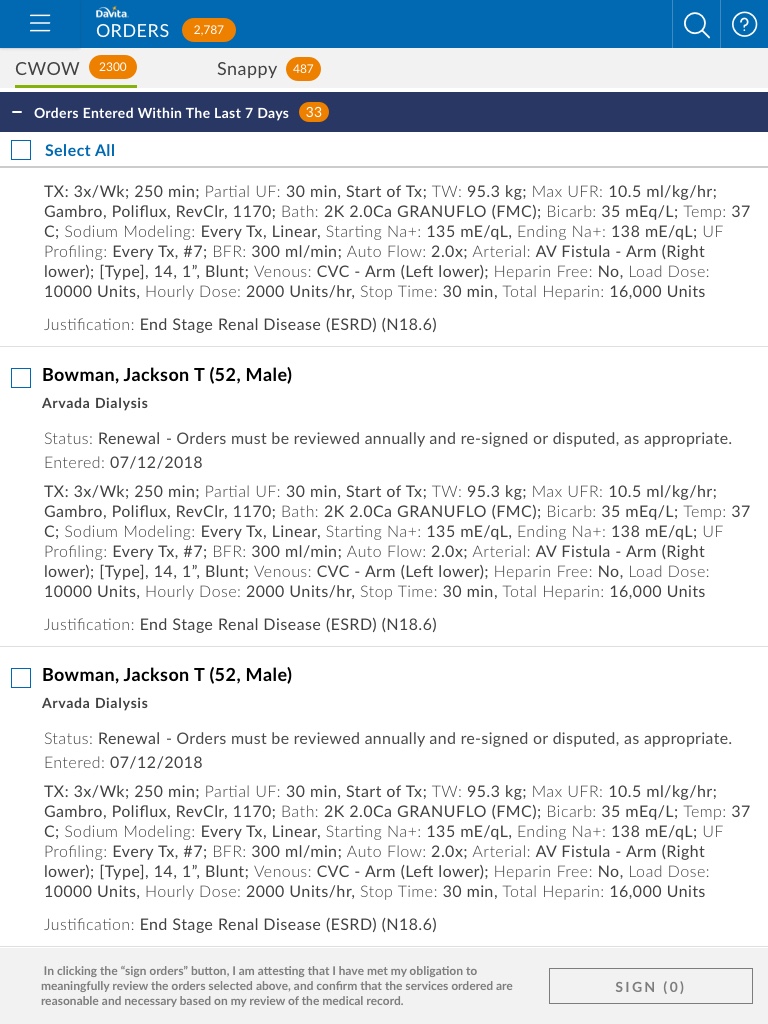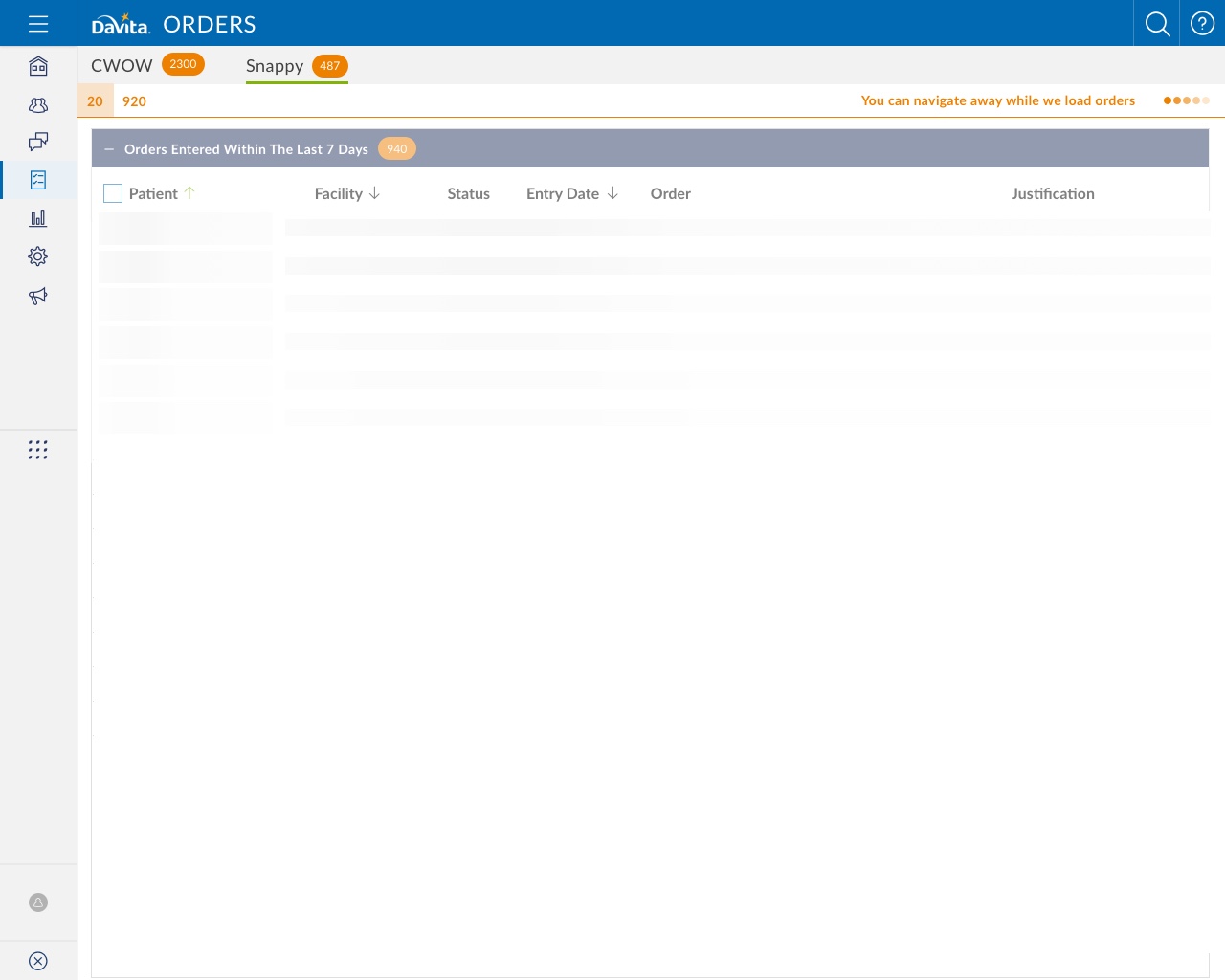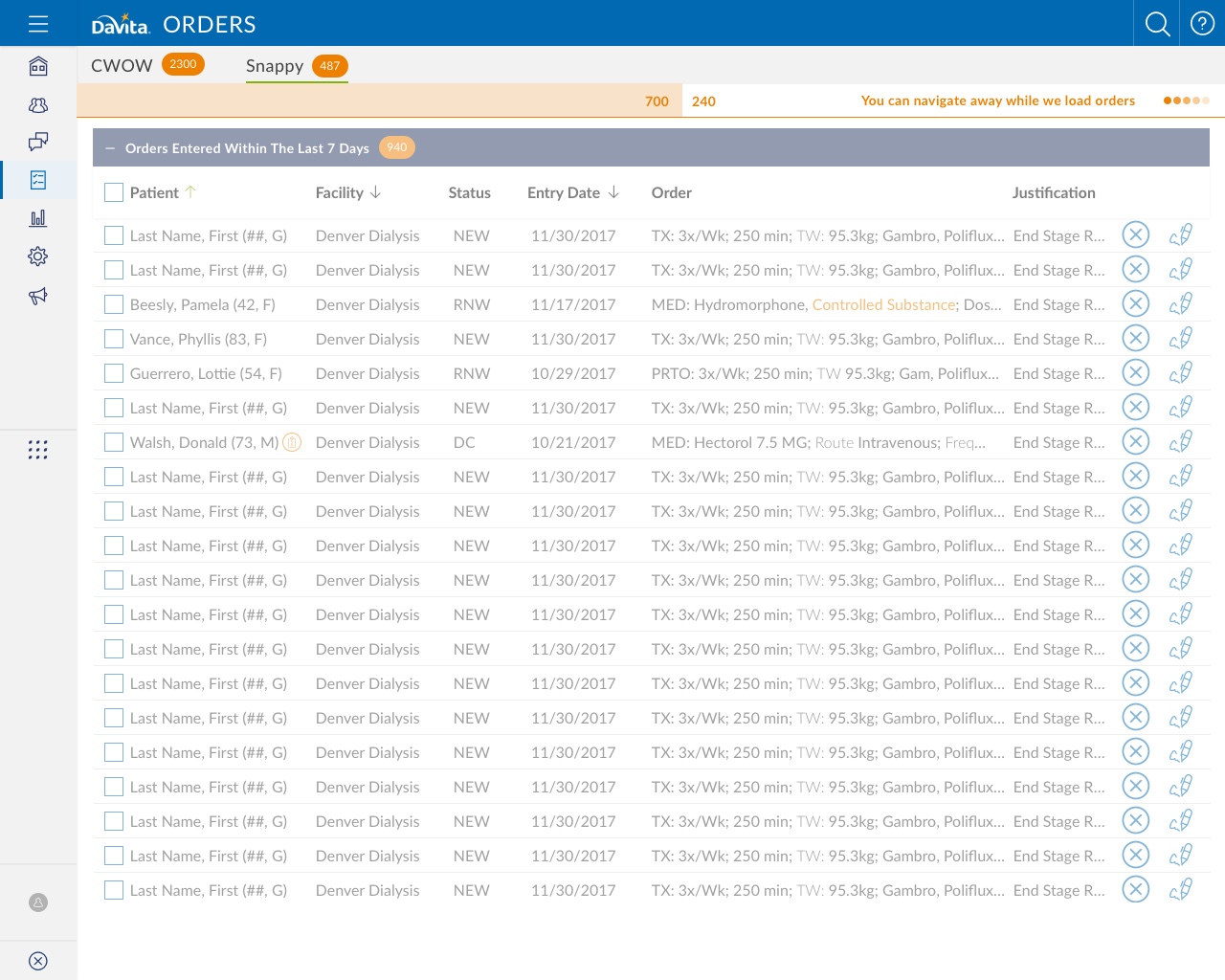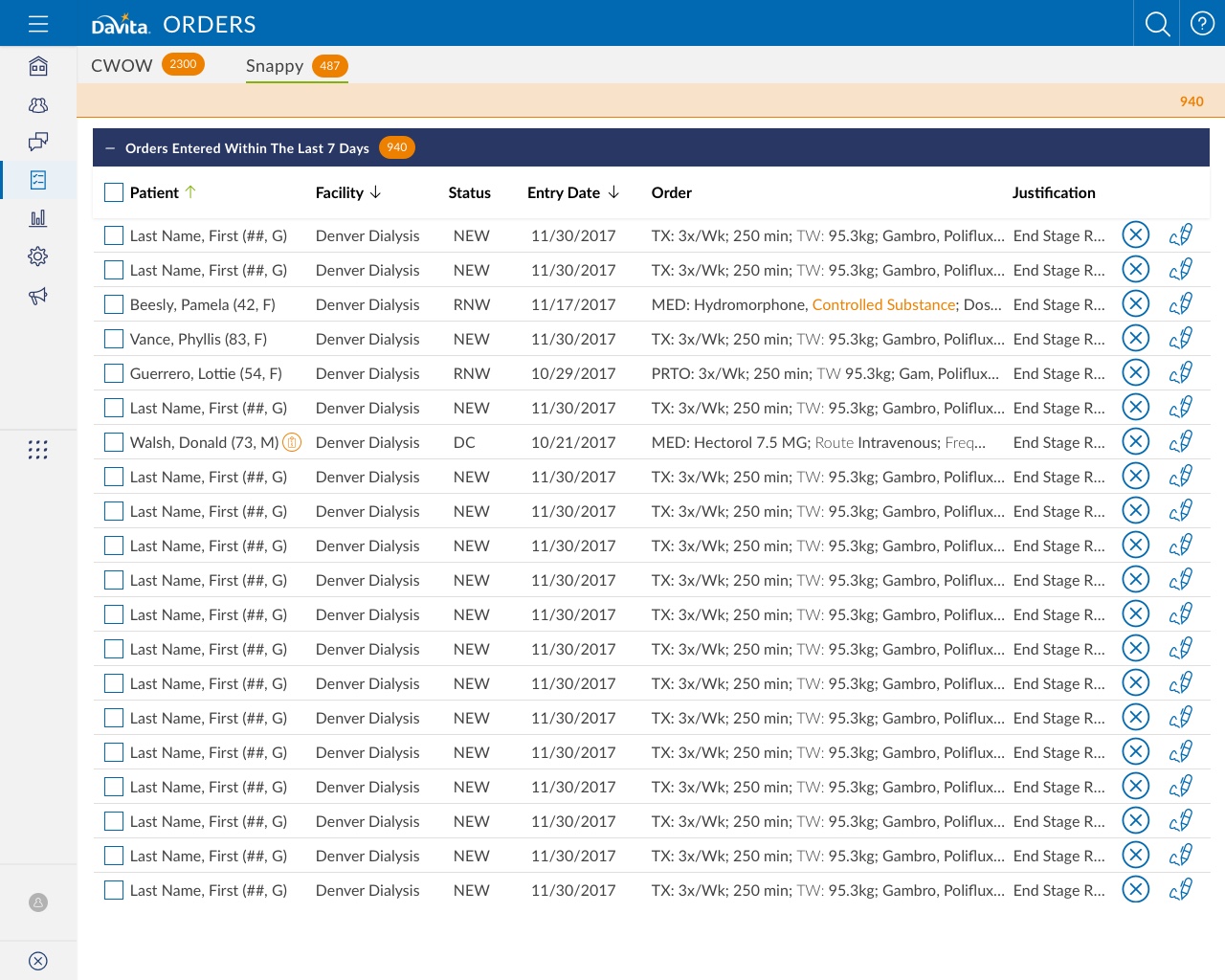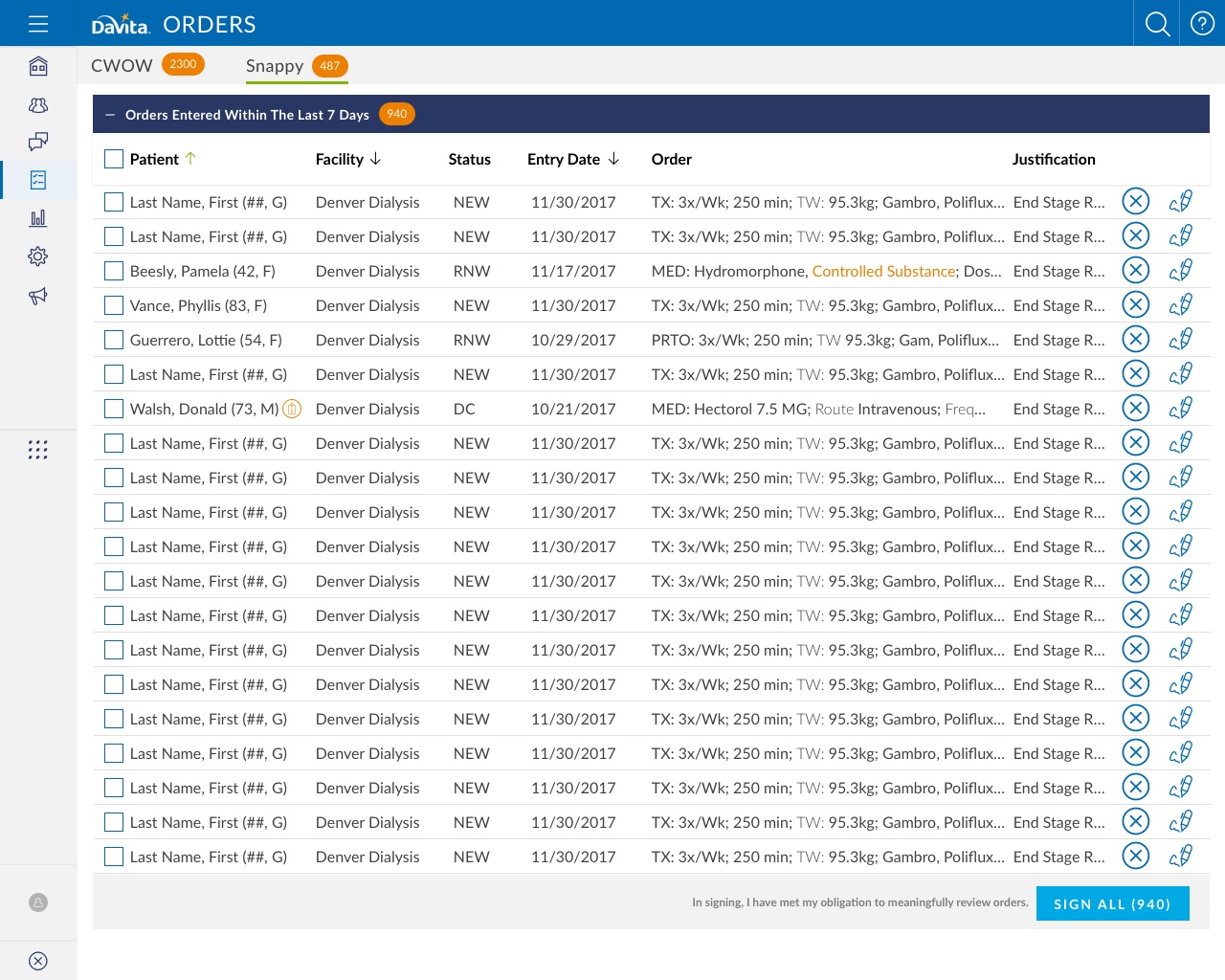Project Background
DaVita provides dialysis to patients around the globe that suffer from End Stage Kidney Disease. These patients are dependent on dialysis and receive treatment at one of DaVita’s 3,200 dialysis facilities. Any updates, modifications or adjustments made to a patient’s care results in the issuance of an order. This order is typically performed at the time of a patient’s dialysis treatment.
Problem
Orders are given and applied at the time of treatment. If a physician doesn’t sign an order after 90 days, DaVita is no longer able to bill for the service which has already been delivered. DaVita was experiencing a revenue leak of $418,000 per month as a result of orders not being signed by this deadline.
My Role
As the UX designer I was tasked with understanding the problem from a holistic point of view. Understand why the problematic group of physicians continued to procrastinate signing orders. Create a solution that would plug the leak.
Limitations
DaVita’s legal team insisted we only allow physicians to sign 20 orders at a time. This ensured there would be a thorough and relevant review of all orders despite our competitors which allow the bulk signing of orders.




